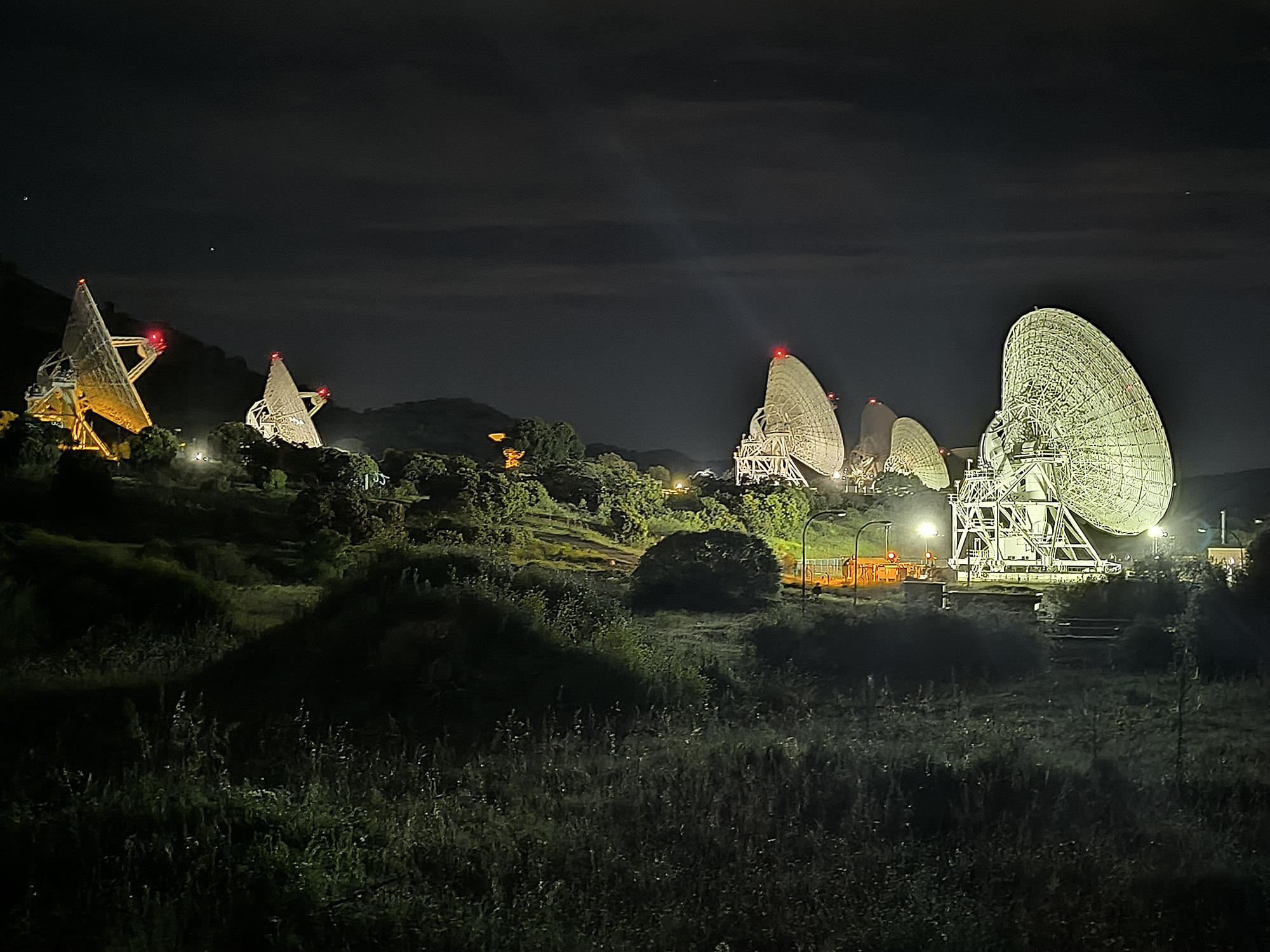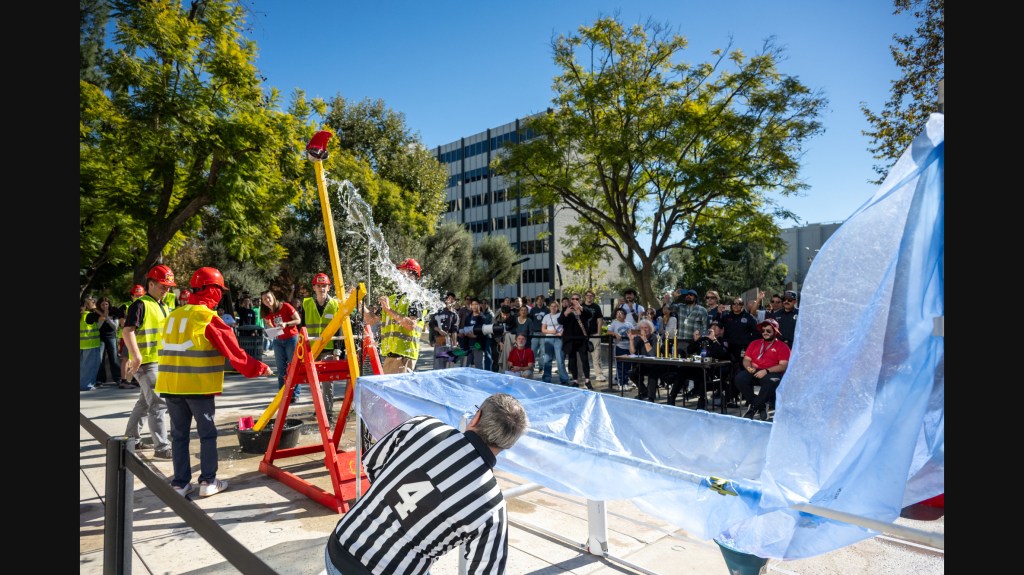This April 20, 2024, image shows a first: all six radio frequency antennas at the Madrid Deep Space Communication Complex, part of NASA’s Deep Space Network (DSN), carried out a test to receive data from the agency’s Voyager 1 spacecraft at the same time.
Combining the antennas’ receiving power, or arraying, lets the DSN collect the very faint signals from faraway spacecraft. Voyager 1 is over 15 billion miles (24 billion kilometers) away, so its signal on Earth is far fainter than any other spacecraft with which the DSN communicates. It currently takes Voyager 1’s signal over 22 ½ hours to travel from the spacecraft to Earth. To better receive Voyager 1’s radio communications, a large antenna – or an array of multiple smaller antennas – can be used. A five-antenna array is currently needed to downlink science data from the spacecraft’s Plasma Wave System (PWS) instrument. As Voyager gets further way, six antennas will be needed.
Image Credit: MDSCC/INTA, Francisco “Paco” Moreno
from NASA https://ift.tt/nB4SLzw



No comments:
Post a Comment